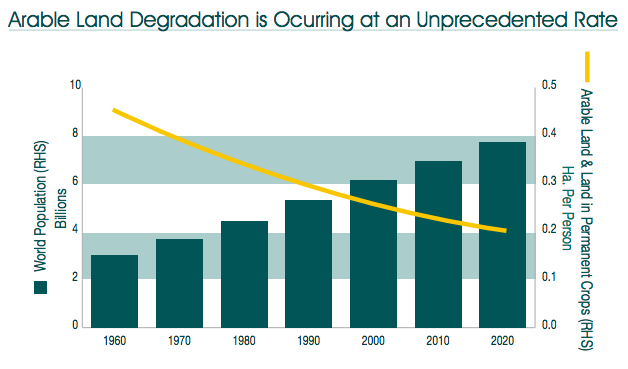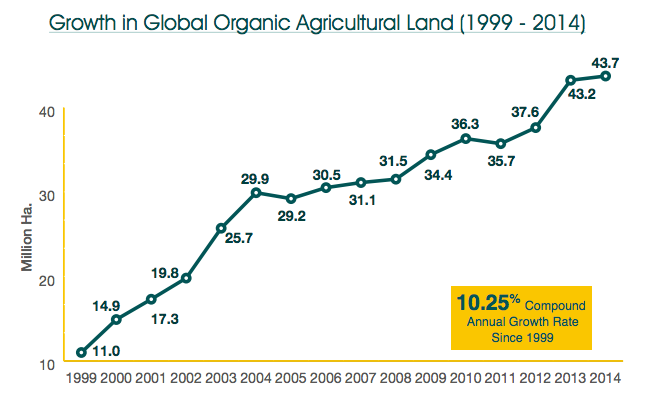Every single day 230,000 people are added to our global population. That’s an extra 83 million people every year and over one billion added every 12 years. Sustaining the needs of a global population that has tripled in the last century alone is one of the major challenges of mankind.
The United Nations continues to revise its population forecasts upwards; the latest revision suggests that by 2050 the world’s population will reach up to 10 billion. This increase in demand will require a 70% expansion in global food production at a time when the availability of farmland is shrinking worldwide and crop yield growth is in decline.
The current rate of global arable land degradation of 12 million hectares a year is 30-35 times the rate experienced during the mid-twentieth century. This is well over the rate in which the soil can naturally recover, outpacing land degradation by a factor of 100, costing the global economy $490 billion annually due to lost production. Researchers from the Massachusetts Institute of Technology, the University of Hong Kong and Colorado State University estimate that global crop yields of rice, wheat, corn and soy will see a 10% decline by 2050. Rising urbanization, damage resulting from chemical pesticides, deforestation, overgrazing and the impact of global warming are all contributing to the process by which the farmland loses its productivity and vegetation cover disappears. In turn, this affects the ecosystems that play a critical role in maintaining the environment and securing our global food supply.
.
Source: GS & PA Research, Food and Agricultural Organization (2012)
.
There is a great need for a New Green Revolution in agriculture and we are extremely fortunate to be living during an era of profound technological innovation. Researchers at the University of Illinois have used genetic engineering to speed up photosynthesis by 20% in order to increase the yield of corn, soybeans, and wheat by as much as 50%. In the past year, artificial intelligence has made incredible advances with IBM, Monsanto and Google helping farmers analyze and use the growing amount of satellite, tractor and field data available. This will help increase yields and profits by optimizing the farm management process through precise information that reveals the best place to plant crops and when exactly to apply water and fertilizers.
One of the most exciting resources to come into the fore in 2017 is the incredible use of organic compounds in sustainable crop care. Researchers are continuously identifying natural compounds that can be used by farmers to boost yields, increase resistance to drought and disease, protect crops and increase soil fertility, while reducing agriculture’s reliance on synthetic inputs that are both costly and damaging to the environment, pollinators and mankind. These new natural, organic and sustainable alternatives are being referred to as the next great platform for agriculture, and one vital compound is azadirachtin, exclusively found in the United Nations Tree of the 21st Century – neem.
.
Source: FIBL & IFOAM (2016)
.
Now is the best time to be involved in agriculture. This sector retains its incredible potential for profitable growth even during times of volatility and uncertainty in global financial markets. Why? Agriculture faces a significant global challenge that requires constant attention – feeding the expected 10 billion people on Earth by 2050 with steadying crop yields and decreasing amounts of arable farmland available. This places a vast premium on businesses that drive innovation and development in this sector.

